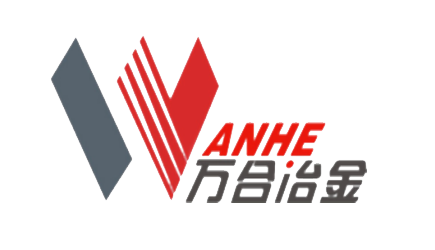Pickling Line
The acid pickling line plays a critical role in the steel metallurgy field prior to cold rolling production. Its primary function is to remove iron oxide scale and dirt from the surface of steel coils delivered from the hot continuous rolling mill, utilizing both mechanical and chemical processes to achieve a clean-surfaced strip of steel.
Category:
Keywords:
Pickling Line
The pickling line plays a critical role before cold rolling production, primarily using mechanical and chemical actions to remove iron oxide scale and dirt from the surface of hot-rolled strip steel, resulting in clean, high-quality strip steel. Our company can provide customers with push-pull type pickling lines as well as continuous pickling lines.
Push-pull type pickling line:
The push-pull type pickling line is a non-continuous pickling unit that, compared to continuous pickling lines, offers advantages such as lower investment, simpler equipment, strong adaptability to variations in steel strip grades, easy operation, and convenient maintenance.
Production process parameters:
Ingredients |
Board width |
Plate thickness |
Craft Speed |
Crafting Method |
Annual production |
Cold-rolled steel strip, hot-rolled steel strip, and low-alloy steel strip |
250–1,500 mm |
1.2–6.0 mm |
15–150 m/min |
Push-and-pull shallow-slot turbulent hydrochloric acid pickling |
10– |
Production process flow:
Loading cart → Uncoiler → Adjustable Guide Plate → 9-Roll Straightener with Clamping and Feeding Rollers → Vertical Roll Centering Unit → Head-Cutting Shear with Clamping and Feeding Mechanism → Corner Cutting Shear (with scrap basket) → Reverse Rinse Tank → Pickling Tank → Rinsing Tank → Hot Air Dryer → Vertical Roll Centering Unit → Clamping and Feeding Rollers → Rear Loop Pit → Vertical Roll Centering Unit → Clamping and Feeding Rollers → Disc Shear → Wasteband Coiler → Tensioner → Lubrication Machine → Turning Feed Roller → Adjustable Guide Plate → Coiler → Unloading Cart.
Continuous Acid Pickling Line:
The key feature of the continuous pickling production line is that steel coils are uncoiled one by one, and then seamlessly welded end-to-end between coils as they continuously pass through the pickling tanks. The line is equipped with an entry loop and an exit loop, ensuring smooth, uninterrupted operation of the equipment during welding and when coils are unwound from the coiler.
Production process flow:
Loading cart → Uncoiler → Nine-roll straightener with pinch rolls → Double shear cutter → Welding machine → Inlet loop → Pickling tank → Rinsing tank → Hot-air dryer → Post-loop → Tensioner → Disc shear → Wasteband coiler → Edge-guiding system → Tensioner → Oil-coating machine → Turning pinch roll → Adjustable guide plate → Coiler → Unloading cart.
Production process parameters:
Raw Materials |
Board width |
Board Thickness |
Craft Speed |
Crafting Method |
Annual production |
Cold-rolled steel strip, hot-rolled steel strip, and low-alloy steel strip |
250~1500mm |
1.2–6.0 mm |
15–150 m/min |
Continuous Acid Pickling |
10 to 500,000 tons/year |
Previous page
Next page
Previous page
Degreasing Unit
Next page
Aluminum alloy casting is a manufacturing process that involves pouring molten aluminum alloy into a mold, allowing it to cool and solidify into the desired part shape. It is widely used in industries such as automotive and aerospace. The main casting methods include sand casting, metal die casting, die casting, and low-pressure casting, each suited to different levels of complexity and production volumes—for instance, sand casting is ideal for large components, while die casting enables high-precision, high-volume production.
CNC machining is a modern mechanical processing technology that achieves high precision and efficiency through computerized, digital control. As a core component of advanced manufacturing techniques, it is rapidly advancing toward even greater precision, higher efficiency, and increased intelligence—making it an indispensable key technology in today’s industrial manufacturing.
CNC machining is a modern mechanical processing technology that achieves high precision and efficiency through computerized, digital control. As a core component of advanced manufacturing techniques, it is rapidly advancing toward even greater precision, higher efficiency, and increased intelligence—making it an indispensable key technology in today’s industrial manufacturing.
The hydraulic three-way valve is a critical component used in hydraulic systems to control fluid flow direction. It features three ports, enabling functions such as fluid diversion, confluence, or directional switching.


